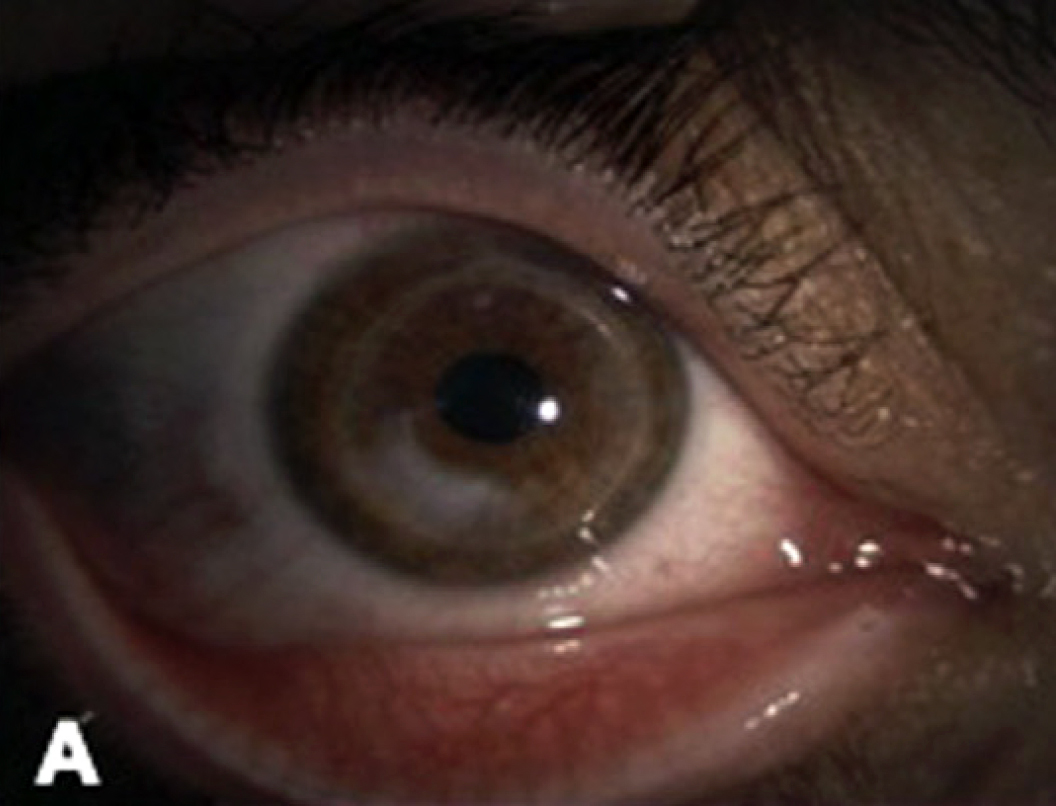 |
|
Age, sex, tear production and tear stability each seem to share an association with PHSCO, study finds. Click image to enlarge. |
Peripheral hypertrophic subepithelial corneal degeneration (PHSCO) is a rare condition with a pathogenesis that still isn’t fully understood. To investigate risk factors for the condition, a new study evaluated various characteristics of a cohort of affected patients, including phenotype, tear secretion, refractive changes and age. It found that PHSCO seems to occur mostly bilaterally in middle-aged women and is associated with a reduction in both tear production and tear film stability.
A total of 112 patients (195 eyes) were included in the retrospective, interventional case series (78.6% female, mean age: 56). The researchers assessed each patient’s sex, age, fluorescein tear film breakup time (FTBUT), Schirmer test score, iris color and hair color. They reported in the study, published in Acta Ophthalmologica, that the median FTBUT was six seconds and that the median Schirmer test score was 8mm. Additionally, in nearly three out of four patients (74%), both eyes were involved.
The team noted that 86 eyes of 64 patients (55%) received superficial keratectomy. They pointed out in their paper that “sphere and cylinder changed significantly one month and one year postoperative compared with the preoperative objective refraction, while there was no significant change between one month and one year postoperatively.”
Middle-aged women made up the majority of the cohort with PHSCO; more than three-fourths were women, and nearly a third of all participants were between the ages of 50 and 59 (29%). Patients who were 60 to 69 years old made up the second most common age group (24%). Unlike age and sex, neither hair color nor iris color appeared to be associated with PHSCO.
The researchers also noted that “in the time course of four years, most patients with PHSCO had only minimal disease progression. Changes of refraction and BCVA over four years were not statistically significant.” They added that this finding may help patients and clinicians know what to expect later in the course of the disease.
Finally, the researchers added that they found “sustained reduction of the cylinder after superficial keratectomy, while sphere, axis, spherical equivalent and corrected distance visual acuity were similar to preoperative values one year after surgery.”
This study’s findings can offer clinicians guidance in determining which patients are at greater risk for developing PHSCO.
Riedl JC, Misirkhanova A, Musayeva A, et al. Risk factors for peripheral hypertrophic subepithelial corneal opacification. Acta Ophthalmol. December 4, 2022. [Epub ahead of print]. |

